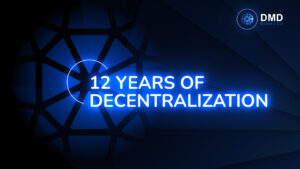VANCOUVER, BC, Sept. 20, 2024 /CNW/ – Investments in critical minerals infrastructure are essential to enable Canada to seize the generational opportunity of the transition to a low-carbon economy and capitalize on our rich mineral resources. Canada is well positioned to be a global leader and first-class producer of a wide variety of critical minerals that are essential to power the clean economy and, in turn, create good jobs and support economic opportunities across critical mineral value chains — from upstream exploration and extraction to downstream processing, manufacturing and recycling.
Today, the Honourable Jonathan Wilkinson, Minister of Energy and Natural Resources, with the Honourable Josie Osborne, British Columbia’s Minister of Energy, Mines and Low Carbon Innovation, and the Honourable Ranj Pillai, Premier of the Yukon, announced up to $60 million in funding, pending final due diligence from the Natural Resources Canada, for two critical minerals infrastructure developments in B.C.’s Golden Triangle and the Yukon. This funding would be provided through the Critical Minerals Infrastructure Fund (CMIF).
Galore Creek Mining Corporation (Galore Creek) is planning to construct a 43-kilometre access road to support the development of its copper mine located in Tahltan Territory in northwest B.C. The Galore Creek deposits contain over 12 billion pounds of copper and, once in production, will significantly increase Canada’s annual copper supply. The construction of the Galore Creek Access Road would link the mine project to existing road infrastructure, provide ground access to proposed mill and processing facilities, and provide the electricity transmission corridor allowing the Galore Creek mine to operate using BC Hydro’s low-emission electricity grid. Road improvements are integral to advancing critical minerals development in B.C.’s northwest, in partnership with First Nations. Pending final due diligence, Natural Resources Canada has conditionally approved an investment of up to $20 million under the CMIF for this project.
The Government of Yukon is seeking to undertake pre-feasibility activities to advance a 765-kilometre, high-voltage transmission line network that would connect the Yukon electrical grid to the North American grid in B.C. This regional project has proposed energy infrastructure located in two priority regions for critical minerals development — Yukon’s Cassiar and Tanana regions and B.C.’s Golden Triangle. The transmission line could support projects producing critical minerals such as cobalt, copper, molybdenum, nickel, platinum group metals, tungsten and zinc in the Yukon and northern B.C. Pending final due diligence, Natural Resources Canada has conditionally approved an investment of up to $40 million under the CMIF for this project.
The Critical Minerals Infrastructure Fund is a key program under the Canadian Critical Minerals Strategy to address infrastructure gaps and enable sustainable critical minerals production and connect resources to markets through various clean energy, electrification and transportation infrastructure projects. Future funding decisions for projects under the CMIF to further critical minerals infrastructure development are also expected in the coming months.
These projects — which benefit from close collaboration under the B.C. and Yukon Regional Energy and Resource Tables — are, in addition to the recently announced Northwest BC Highway Corridor Improvements Project, key to facilitating critical minerals development in the Golden Triangle and Yukon. B.C.’s Golden Triangle has considerable mineral potential and holds approximately 75 percent of Canada’s known copper reserves. Copper is crucial in various industrial processes and a fundamental component in electrical wiring, electronics and renewable energy systems, including solar panels and wind turbines.
Critical minerals are essential components in products used for clean energy technologies such as electric vehicles, electrical transmission lines and batteries. B.C. and the Yukon’s mining sectors provide many of the building blocks of clean technologies needed to fight climate change and build a clean economy. Across the country, clean energy solutions are providing enormous economic opportunity for Canada.
Quotes
“These two projects, under the Canadian Critical Minerals Strategy’s flagship program, will develop the necessary infrastructure to access and transport our rich critical mineral resources in northern B.C. and the Yukon. Developments like these help mines get built faster, and they are a key element in seizing the generational opportunity before us. These investments are needed to support critical minerals development in the region, improve community access and safety, and create good mining jobs across British Columbia and the Yukon.”
The Honourable Jonathan Wilkinson
Minister of Energy and Natural Resources
“B.C. has the critical minerals that Canada and the world needs to build a clean economy. We have a generational opportunity to create good jobs, not only in northwest B.C. but also in communities across the province that supply and provide services to our mining sector. That’s why we are working with Canada and First Nations on key infrastructure upgrades needed to unlock billions of investments in new critical mineral mines like Galore Creek and provide new opportunities for people and communities.”
The Honourable Josie Osborne
B.C. Minister of Energy, Mines and Low Carbon Innovation
“The Grid Connect Project is more than an energy initiative: it presents a transformative opportunity for all Yukoners. By delivering clean, affordable and reliable clean energy, this project will not only power our homes but also drive economic and social growth. I thank our partners in British Columbia and the federal government for their collaboration on this important project, which will positively impact our northern communities. This is a proud milestone for our government on the path toward a more sustainable energy future.”
The Honourable Ranj Pillai
Premier of the Yukon
“This project will connect Canada’s two most western jurisdictions, helping bring the Yukon on to the North American power grid. It marks a significant step in our shared journey to build a more connected and resilient energy landscape for Yukoners while reducing greenhouse gas emissions. I extend my deepest thanks to everyone whose hard work and determination made this vision a reality. I look forward to seeing how it will enhance clean energy in the Yukon, help protect our incredible natural landscapes and fuel new opportunities for economic growth.”
The Honourable John Streicker
Yukon’s Minister of Energy, Mines and Resources
“We’d like to thank Minister Wilkinson and the Government of Canada for their contribution to developing the Galore Creek Mine and, by extension, Canada’s critical minerals industry. Canada’s support for Galore Creek represents confidence in our project, our owners, the relationships we have fostered with the Tahltan Nation and our commitment to responsibly developing a world-class copper–gold mine.”
Rob Mean
General Manager, Galore Creek Mining Corporation
“Galore Creek has the potential to significantly increase Canada’s production of the copper needed for the energy transition and global development, generating jobs and economic activity, in alignment with Teck’s focus as a Canadian-based energy transition metals company. This investment by the Government of Canada will support the development of infrastructure needed to advance critical mineral projects and strengthen the nation’s mining sector.”
Jonathon Price
President and Chief Executive Officer, Teck Resources Limited
“Newmont is a 50/50 partner of the Galore Creek Project with Teck Resources. Galore Creek stands as Canada’s largest undeveloped copper project, poised to play a crucial role in the transition to a low-carbon economy. As global demand for copper surges, we will soon face a supply deficit that underscores the project’s significance. The investment through Canada’s Critical Minerals Infrastructure Fund in a vital road for Galore Creek will help unlock the project and the broader region’s substantial critical mineral potential in northwest B.C.”
Bernard Wessels
Managing Director North America, Newmont Corporation
Quick Facts
- Canada has developed its own critical minerals strategy with the aim of advancing the development of these resources and related value chains to drive the transition to a low-carbon economy and support advanced technology and manufacturing.
- The Canadian Critical Minerals Strategy addresses five core objectives:
- supporting economic growth, competitiveness and job creation;
- promoting climate action and strong environmental management;
- enhancing global security and partnerships with allies;
- advancing reconciliation with Indigenous peoples; and
- fostering diverse and inclusive workforces and communities.
- Canada’s whole-of-government approach to critical mineral development is collaborative, forward-looking, iterative, adaptive and long-term. The initiatives presented in the Strategy will be implemented and refined in collaboration with provincial, territorial, Indigenous, industry and other Canadian and international partners.
- The CMIF is a key program under the Strategy to support enabling clean energy and transportation infrastructure projects necessary to increase Canada’s supply of responsibly sourced critical minerals.
- The CMIF supports strategic priorities such as decarbonizing industrial mining operations, strengthening supply chains through transportation infrastructure and advancing economic reconciliation by supporting the participation of Indigenous Peoples in infrastructure and critical minerals projects.
- In addition, the federal government is helping to develop Canada’s abundant critical minerals through NRCan’s Regional Energy and Resource Tables. These regional tables are joint partnerships with individual provinces and territories — in collaboration with Indigenous partners and with the input of key stakeholders — to identify and accelerate shared economic priorities for a low-carbon future in the energy and resource sectors.
Associated Links
- Canadian Critical Minerals Strategy
- Government of Canada Launches $1.5-Billion Critical Minerals Infrastructure Fund
- Canada and B.C. Invest in Infrastructure Upgrades to Support Critical Minerals Development in Northwest B.C. and Create Jobs Across the Province
- Programs and funding for critical minerals projects
- Regional Energy and Resource Tables
- Galore Creek Mining Corporation
Follow us on LinkedIn
SOURCE Natural Resources Canada




